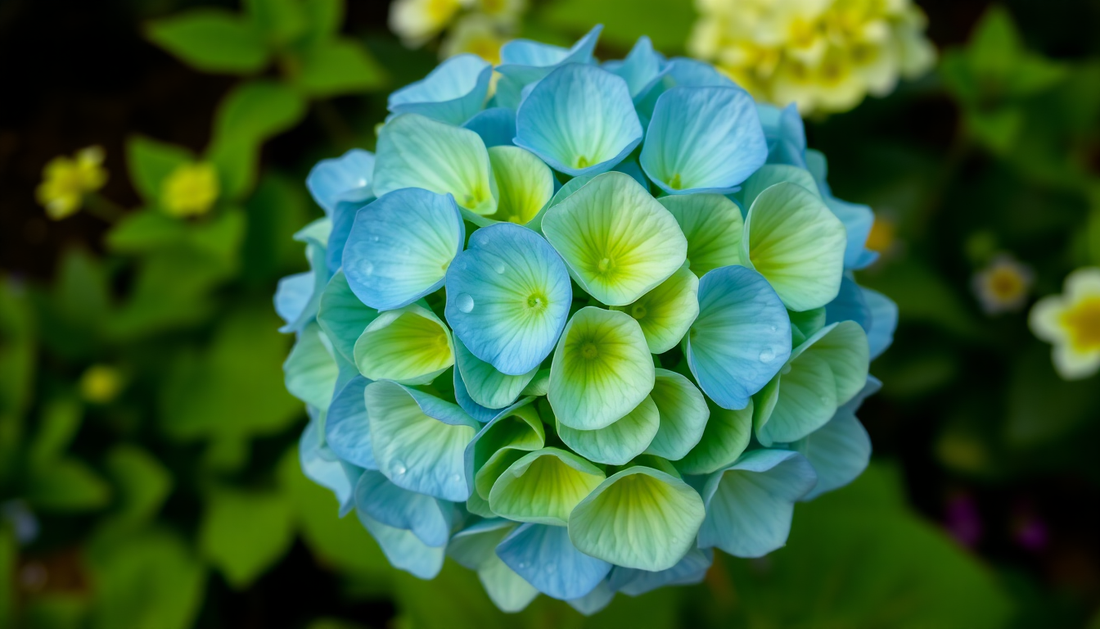
Why Are My Hydrangea Flowers Turning Green?
As a passionate gardener, I've always been fascinated by the vibrant and ever-changing colors of hydrangea flowers. These stunning blooms can range from deep blue to soft pink, and even brilliant white, depending on the soil conditions and the plant's unique characteristics. However, one common issue that many gardeners face is the sudden transformation of their hydrangea flowers from their desired hue to a disappointing green.
If you've found yourself in this predicament, don't worry – you're not alone. In this comprehensive blog post, we'll explore the reasons behind this color change and provide you with practical solutions to help you maintain the beautiful, vibrant blooms you've come to love.
Understanding the Science Behind Hydrangea Color Changes
Hydrangeas are known for their ability to change color based on the pH level of the soil in which they are grown. The key factor that determines the flower color is the availability of aluminum in the soil.
In acidic soils (with a pH below 6.0), hydrangeas are able to absorb aluminum, which reacts with the plant's natural pigments to produce blue flowers. Conversely, in alkaline soils (with a pH above 6.0), the aluminum is less available, and the flowers tend to take on a pink or red hue.
However, when the soil pH is neutral (around 7.0), the hydrangea flowers may start to turn green. This is because the plant is unable to access the necessary aluminum, and the natural chlorophyll in the plant takes over, resulting in the green coloration.
Identifying the Causes of Green Hydrangea Flowers
There are several factors that can contribute to the transformation of hydrangea flowers from their desired color to a disappointing green. Let's explore the most common causes:
1. Soil pH Imbalance
As mentioned earlier, the soil pH is the primary driver of hydrangea flower color. If the pH is too neutral, the flowers may turn green. This can happen if the soil has been over-limed or if the natural pH of the soil is already neutral.
2. Nutrient Deficiencies
Hydrangeas are heavy feeders and require a balanced supply of essential nutrients to thrive. If the plant is lacking in certain nutrients, such as nitrogen, phosphorus, or potassium, it can result in the flowers turning green.
3. Excessive Sunlight
While hydrangeas generally prefer partial shade, too much direct sunlight can also cause the flowers to turn green. The intense sunlight can stress the plant and disrupt the natural pigment production.
4. Pests and Diseases
Certain pests, such as aphids or spider mites, as well as fungal diseases, can also contribute to the greening of hydrangea flowers. These issues can weaken the plant and affect its ability to produce the desired flower colors.
Strategies to Restore the Vibrant Color of Your Hydrangeas
Now that we've identified the potential causes of green hydrangea flowers, let's explore the steps you can take to restore the beautiful hues you desire:
1. Adjust the Soil pH
The first step is to test your soil's pH and make the necessary adjustments. If the pH is too neutral, you can lower it by adding sulfur or aluminum sulfate to the soil. Conversely, if the pH is too acidic, you can raise it by adding lime.
2. Provide Balanced Nutrition
Ensure that your hydrangeas are receiving a well-balanced fertilizer that contains the necessary macronutrients (nitrogen, phosphorus, and potassium) as well as micronutrients like iron and magnesium. This will help the plant produce the pigments responsible for the desired flower colors.
3. Optimize Light Exposure
If your hydrangeas are receiving too much direct sunlight, consider moving them to a partially shaded location or providing some form of shade, such as a canopy or a trellis.
4. Manage Pests and Diseases
Regularly inspect your hydrangeas for signs of pests or diseases and take appropriate action to address any issues. This may involve using organic pest control methods or applying fungicides as needed.
5. Be Patient and Persistent
Restoring the vibrant color of hydrangea flowers can take time and may require a combination of the above strategies. Be patient and persistent, as it may take several growing seasons to see the desired results.
Remember, every garden is unique, and the specific steps required to maintain the beautiful color of your hydrangeas may vary. By understanding the underlying causes and implementing the appropriate solutions, you can enjoy the stunning, vibrant blooms that make hydrangeas such a beloved addition to any garden.
Happy gardening!







No comments